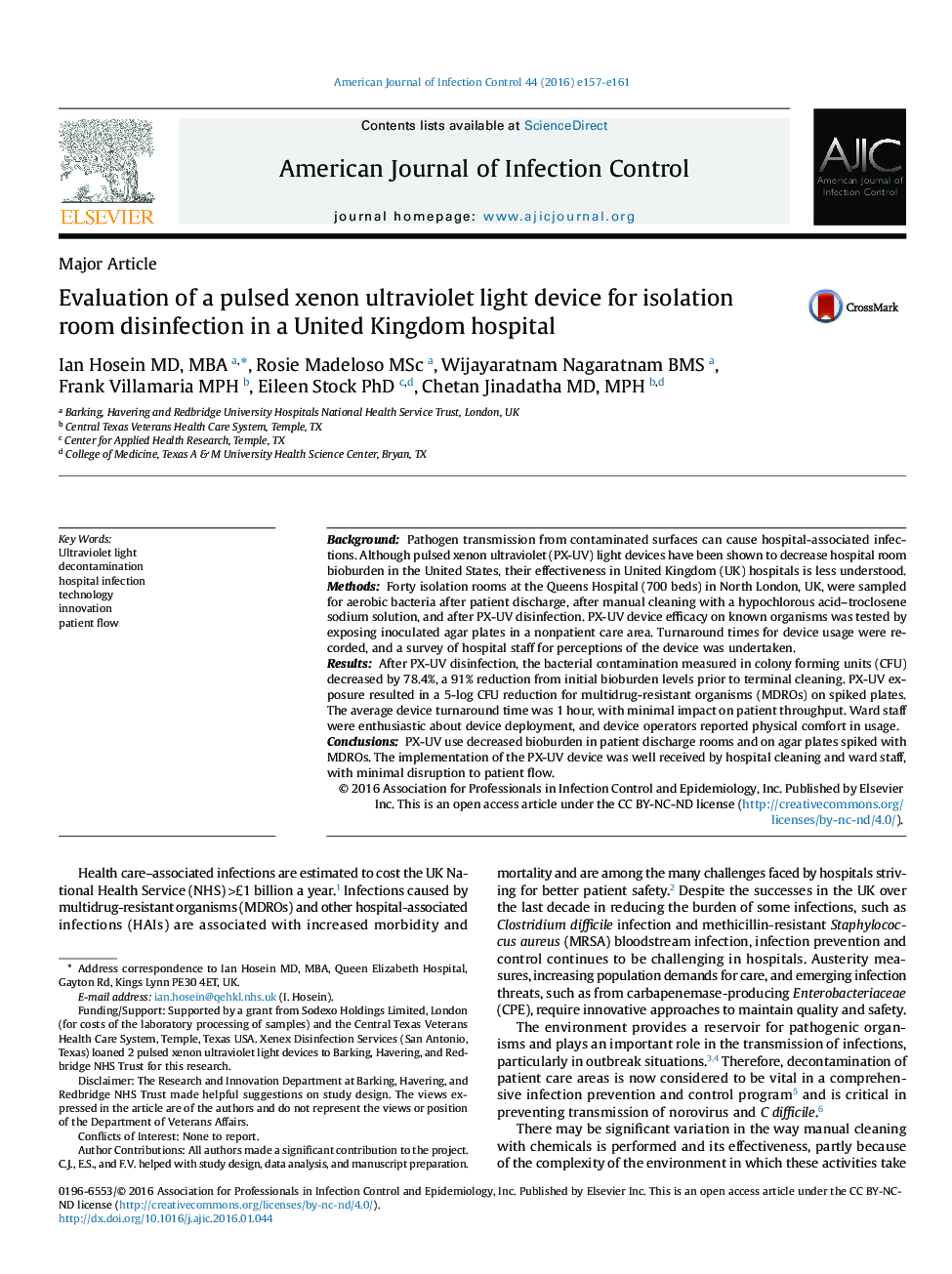| کد مقاله | کد نشریه | سال انتشار | مقاله انگلیسی | نسخه تمام متن |
|---|---|---|---|---|
| 5566723 | 1563453 | 2016 | 5 صفحه PDF | دانلود رایگان |
- Pulsed xenon ultraviolet devices significantly reduced bioburden in terminal disinfection of isolation rooms in a 700-bed UK hospital.
- Pulsed xenon ultraviolet devices achieved a 5-log reduction in multidrug-resistant organisms on spiked agar plates in a nonpatient care area.
- Use of pulsed xenon ultraviolet devices did not affect patient flow on busy wards and was readily incorporated into hospital cleaning schedules.
- Both device operators and clinical ward staff were enthusiastic about device usage.
BackgroundPathogen transmission from contaminated surfaces can cause hospital-associated infections. Although pulsed xenon ultraviolet (PX-UV) light devices have been shown to decrease hospital room bioburden in the United States, their effectiveness in United Kingdom (UK) hospitals is less understood.MethodsForty isolation rooms at the Queens Hospital (700 beds) in North London, UK, were sampled for aerobic bacteria after patient discharge, after manual cleaning with a hypochlorous acid-troclosene sodium solution, and after PX-UV disinfection. PX-UV device efficacy on known organisms was tested by exposing inoculated agar plates in a nonpatient care area. Turnaround times for device usage were recorded, and a survey of hospital staff for perceptions of the device was undertaken.ResultsAfter PX-UV disinfection, the bacterial contamination measured in colony forming units (CFU) decreased by 78.4%, a 91% reduction from initial bioburden levels prior to terminal cleaning. PX-UV exposure resulted in a 5-log CFU reduction for multidrug-resistant organisms (MDROs) on spiked plates. The average device turnaround time was 1âhour, with minimal impact on patient throughput. Ward staff were enthusiastic about device deployment, and device operators reported physical comfort in usage.ConclusionsPX-UV use decreased bioburden in patient discharge rooms and on agar plates spiked with MDROs. The implementation of the PX-UV device was well received by hospital cleaning and ward staff, with minimal disruption to patient flow.
Journal: American Journal of Infection Control - Volume 44, Issue 9, 1 September 2016, Pages e157-e161
